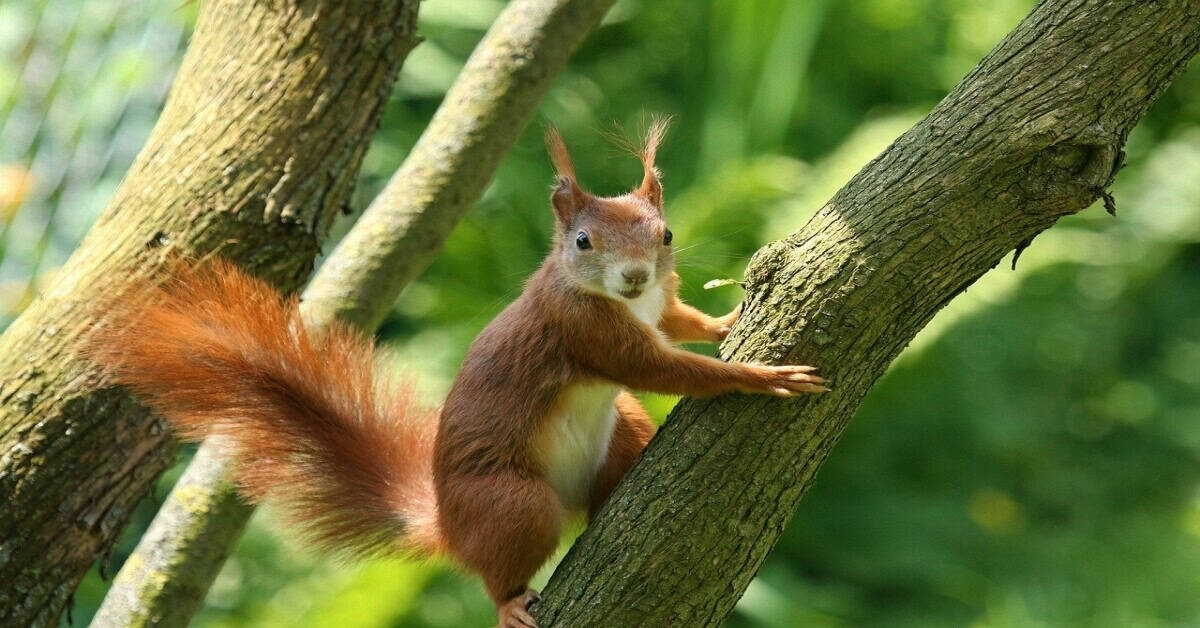Tropical deciduous forests are unique ecosystems where trees shed their leaves seasonally. These forests are found in regions with a distinct dry season, like parts of India, Africa, and South America. The rich biodiversity of these forests makes them a fascinating subject for study.
Understanding the animal life in tropical deciduous forests is crucial. These animals play vital roles in maintaining the ecological balance. They help in seed dispersal, pollination, and controlling insect populations. Studying these animals also provides insights into the health of the forest ecosystem.
The variety of animals, including mammals, reptiles, and amphibians, is vast and diverse. Tropical deciduous forest animals adapt to the changing seasons and environment. Learning about these animals helps us appreciate and protect these critical habitats.
Overview of Tropical Deciduous Forests
Tropical deciduous forests, also known as monsoon forests, are unique ecosystems characterized by trees that shed their leaves seasonally. This adaptation helps them conserve water during dry periods.
These forests typically have a dense canopy that allows sunlight to filter through, promoting a diverse undergrowth. Unlike evergreen forests, tropical deciduous forests experience significant changes in foliage throughout the year, creating a dynamic and vibrant environment.
These forests are mainly found in regions with a distinct dry season, such as parts of India, Southeast Asia, Africa, and South America. In India, they cover large areas in states like Madhya Pradesh, Maharashtra, and Karnataka.
In Africa, they are common in countries like Tanzania and Mozambique. South America also has extensive tropical deciduous forests, particularly in Brazil and Peru. The geographical spread of these forests highlights their adaptability to different climatic conditions.
The climate of tropical deciduous forests is marked by a distinct wet and dry season. During the wet season, these forests receive substantial rainfall, leading to lush, green vegetation.
In contrast, the dry season sees a significant reduction in rainfall, causing trees to shed their leaves to minimize water loss. This seasonal variation in climate creates a unique environment where flora and fauna have adapted to thrive under changing conditions.
Tropical Deciduous Forest Animals
Tropical deciduous forest animals include a diverse range of mammals, reptiles, and amphibians.
Mammals in Tropical Deciduous Forests
Mammals in tropical deciduous forests are diverse and fascinating, playing a vital role in the ecosystem. Tropical deciduous forest animals, such as tigers, lions, elephants, and bears, are among the most well-known inhabitants.
These forests also house various deer species, monkeys, langurs, and smaller mammals like coyotes and moose. Each of these species has adapted uniquely to survive and thrive in this dynamic environment.
Adaptations to the environment are essential for survival in tropical deciduous forests. Many mammals have developed physical and behavioral traits to cope with the seasonal changes.
For instance, elephants have large ears to dissipate heat and can travel long distances in search of water during the dry season. Tigers and lions, being apex predators, have honed their hunting skills to take advantage of the dense foliage and the availability of prey.
Monkeys and langurs are agile climbers, moving through the treetops to find food and avoid ground predators.
These mammals play a crucial role in the ecosystem of tropical deciduous forests. Predators like tigers and lions help control the populations of herbivores, maintaining a balance in the food chain.
Herbivores like deer and elephants contribute to seed dispersal and vegetation management, which promotes forest regeneration. Smaller mammals, such as coyotes, help in controlling insect populations.
Understanding the interactions and roles of these mammals helps in appreciating the complex web of life that sustains tropical deciduous forests.

Also Read: Tropical Deciduous Forest Characteristics and Distribution
Reptiles and Amphibians in Tropical Deciduous Forests
Reptiles and amphibians are vital components of tropical deciduous forests, exhibiting incredible diversity and adaptability.
Common reptile species include snakes, lizards, and turtles, while amphibians such as frogs, salamanders, and spotted newts are frequently found.
These creatures are often seen in and around water bodies, under leaf litter, or basking on rocks and branches. Their varied presence contributes to the rich biodiversity of tropical deciduous forests.
Adaptations to the environment enable reptiles and amphibians to survive the seasonal changes characteristic of tropical deciduous forests. Many reptiles, like snakes and lizards, are ectothermic, relying on external heat sources to regulate their body temperature.
This makes basking in the sun a common behavior. Amphibians such as frogs and salamanders have permeable skin that helps in moisture absorption, crucial for surviving the dry season. Some species burrow into the ground or take refuge under logs to maintain hydration and avoid predators.
Reptiles and amphibians play crucial roles in the ecosystem of tropical deciduous forests. They help control insect and rodent populations, serving as both predators and prey within the food web.
Frogs and salamanders, for example, consume large quantities of insects, contributing to pest control. Turtles and lizards aid in seed dispersal and the cycling of nutrients.
By maintaining ecological balance, these reptiles and amphibians support the health and sustainability of tropical deciduous forests, highlighting their importance in these vibrant ecosystems.

Birds in Tropical Deciduous Forests
Birds in tropical deciduous forests exhibit incredible diversity and play vital roles in the ecosystem. These forests are home to colorful parrots, majestic peacocks, and striking hornbills.
Owls and hawks are common predators, while woodpeckers and long-tailed minivets add to the forest’s vibrant avian community. These birds contribute to the forest’s health by participating in seed dispersal, pollination, and pest control.
Adaptations to the environment are crucial for the survival of these bird species. Parrots have strong beaks for cracking nuts and seeds, while hornbills use their large bills to forage for fruits.
Owls possess excellent night vision and silent flight, making them efficient nocturnal hunters. Hawks have keen eyesight for spotting prey from great distances, and woodpeckers have sturdy beaks designed for drilling into trees to find insects.
Other commonly found birds in these forests include kingfishers, mynas, and drongos. Kingfishers are often seen near water bodies, catching fish with their sharp beaks. Mynas are adaptable and thrive in various habitats, while drongos are known for their aggressive behavior in defending their territory.
Each bird species, with its unique adaptations, plays a specific role in maintaining the balance and health of tropical deciduous forests. Understanding these birds and their behaviors highlights the intricate web of life within these rich ecosystems.

Unique Animal Behaviours in Tropical Deciduous Forests
Tropical deciduous forest animals exhibit unique behaviors that help them thrive in their dynamic habitats. Mammals, reptiles, and amphibians in these forests show fascinating adaptations.
For instance, many animals have specific migration patterns, hunting techniques, and mating rituals that enhance their survival. Observing these behaviors offers valuable insights into how they navigate the challenges of their environment.
Migration patterns are a key survival strategy for many species. Some mammals, like deer, migrate seasonally to find food and water. Reptiles, such as certain snakes, move to warmer areas during the cooler months. These migrations ensure that the animals can access resources essential for their survival throughout the year.
Amphibians, like frogs, often migrate to breeding sites during the rainy season, ensuring their offspring have the best chance of survival.
Unique hunting techniques and mating rituals also play a crucial role in survival. Predators like tigers and snakes use stealth and patience to catch their prey. This efficiency helps conserve energy and increase their success rates.
Mating rituals, such as the elaborate dances of some bird species or the vocal calls of frogs, ensure successful reproduction. These behaviors not only facilitate survival but also contribute to the biodiversity and ecological balance of tropical deciduous forests.
Understanding these behaviors highlights the complexity and interdependence of life within these vibrant ecosystems.
Endangered Animals in Tropical Deciduous Forests
Endangered animals in tropical deciduous forests face significant threats that jeopardize their survival. Among the mammals, species like the Bengal tiger and Indian elephant are critically endangered.
Reptiles such as the Indian python and amphibians like certain frog species are also at risk. These animals are essential to the biodiversity and health of their ecosystems.
The primary reasons for their endangered status include habitat loss, poaching, and climate change. Deforestation for agriculture and urban development destroys their natural habitats.
Illegal hunting for body parts and the pet trade further diminishes their populations. Climate change alters their environments, making survival even more difficult.
Conservation efforts are crucial to protect these endangered species. Initiatives like protected areas, anti-poaching laws, and breeding programs aim to restore populations. Public awareness and education also play a key role in conservation.
Preserving these animals is vital for maintaining the ecological balance and ensuring the health of tropical deciduous forests. Understanding and supporting conservation efforts can make a significant difference in their survival.
Conclusion
Animal life in tropical deciduous forests is vital to maintaining the ecological balance and health of these unique ecosystems.
Tropical deciduous forest animals, including mammals, reptiles, and amphibians, play crucial roles in seed dispersal, pest control, and nutrient cycling. Their presence and behaviors ensure the sustainability and diversity of these forests.
Understanding animal life in tropical deciduous forests highlights the importance of preserving these habitats. Learning about the unique adaptations and roles of these animals can inspire efforts to protect and conserve these forests.
Supporting conservation initiatives helps safeguard the future of tropical deciduous forest animals. Preserving these animals and their habitats is essential for the well-being of our planet.








